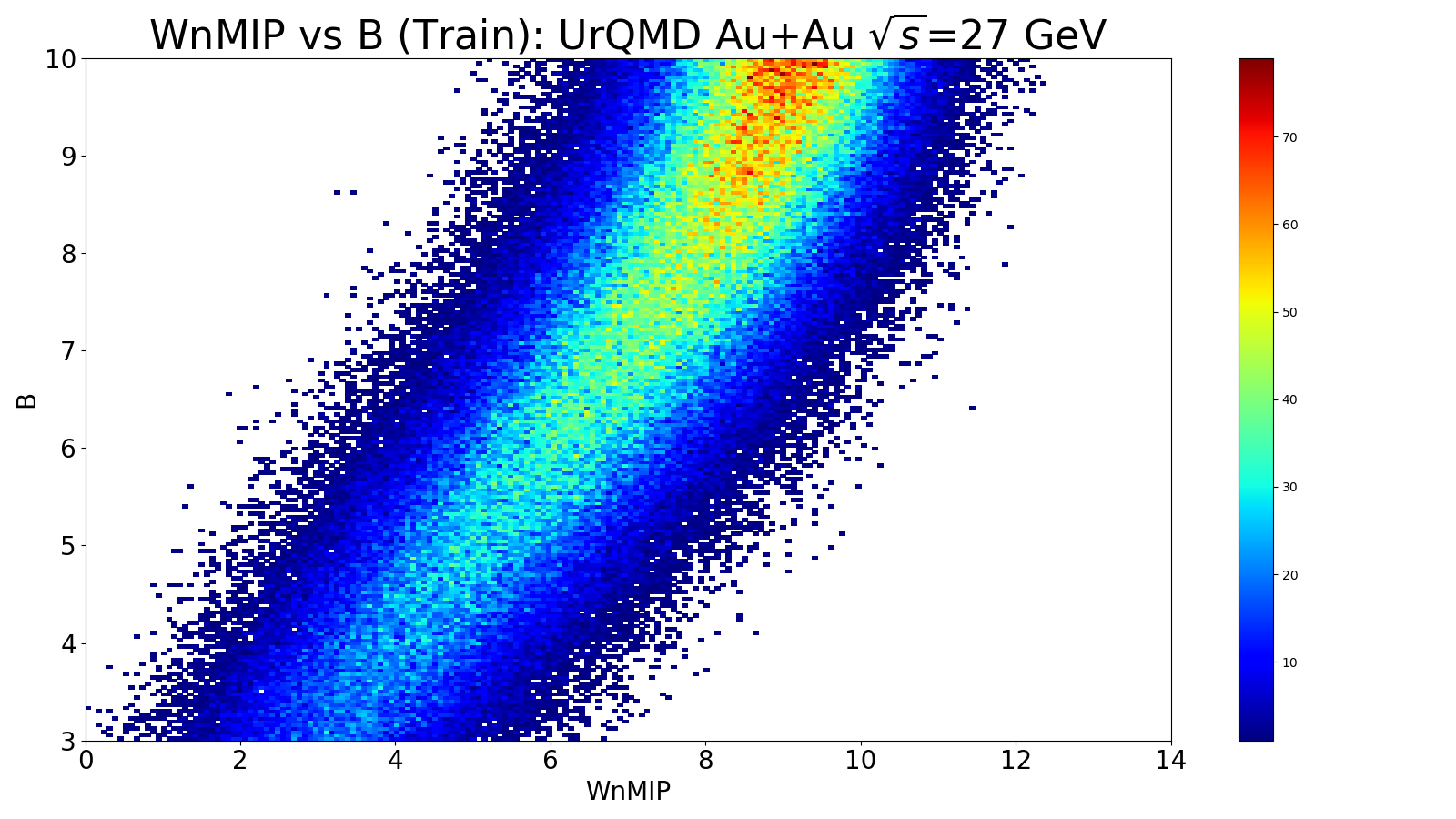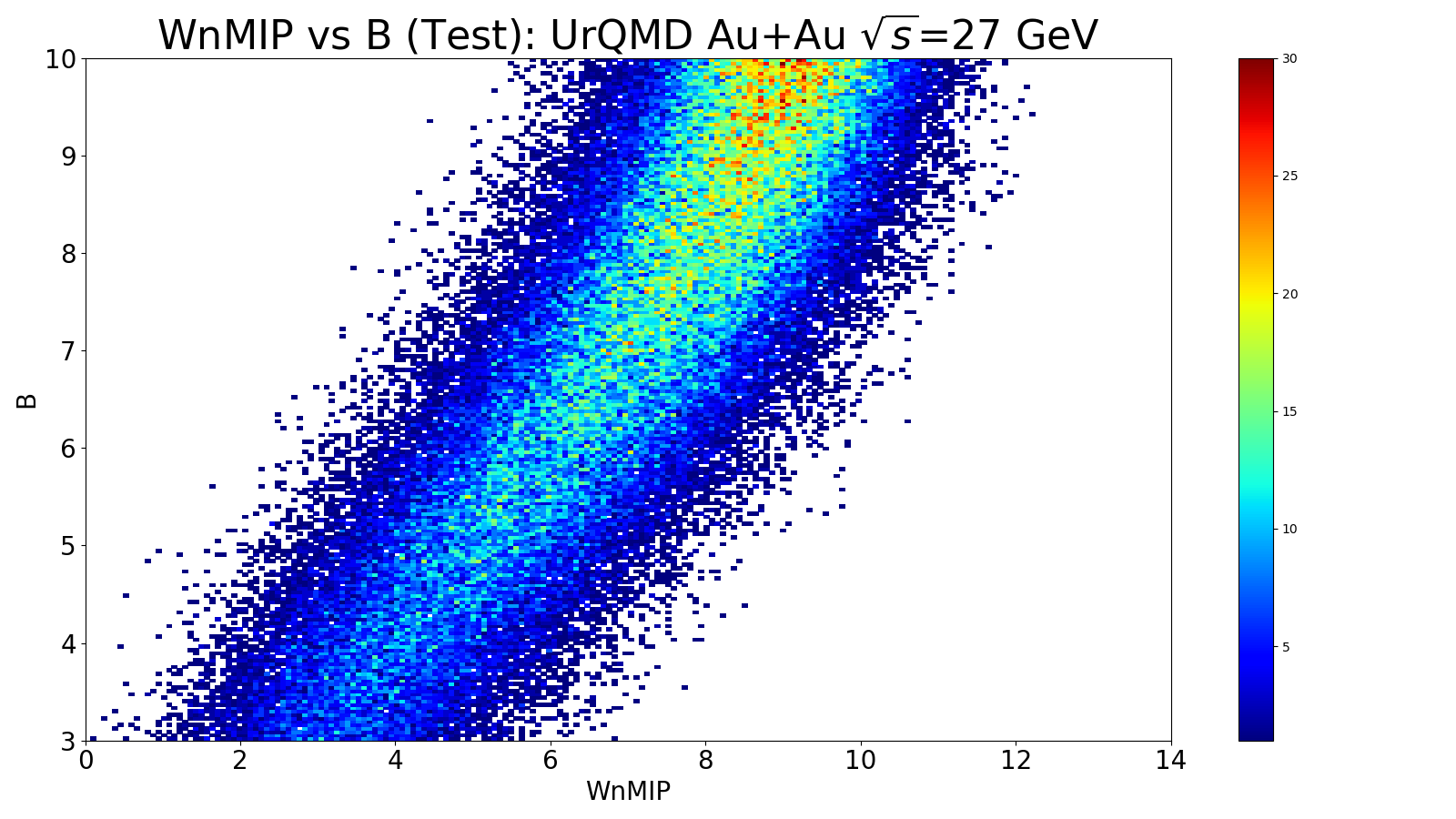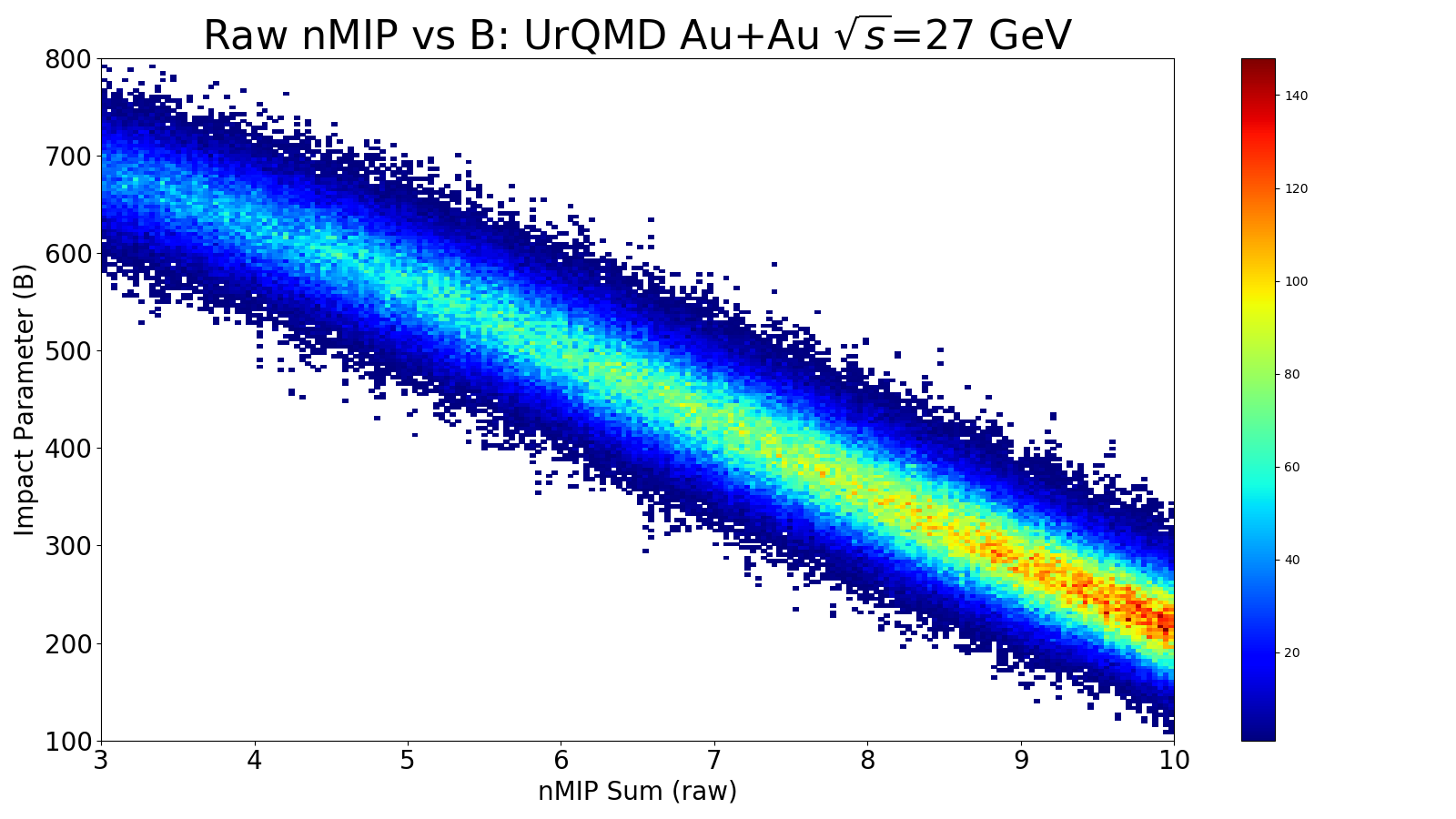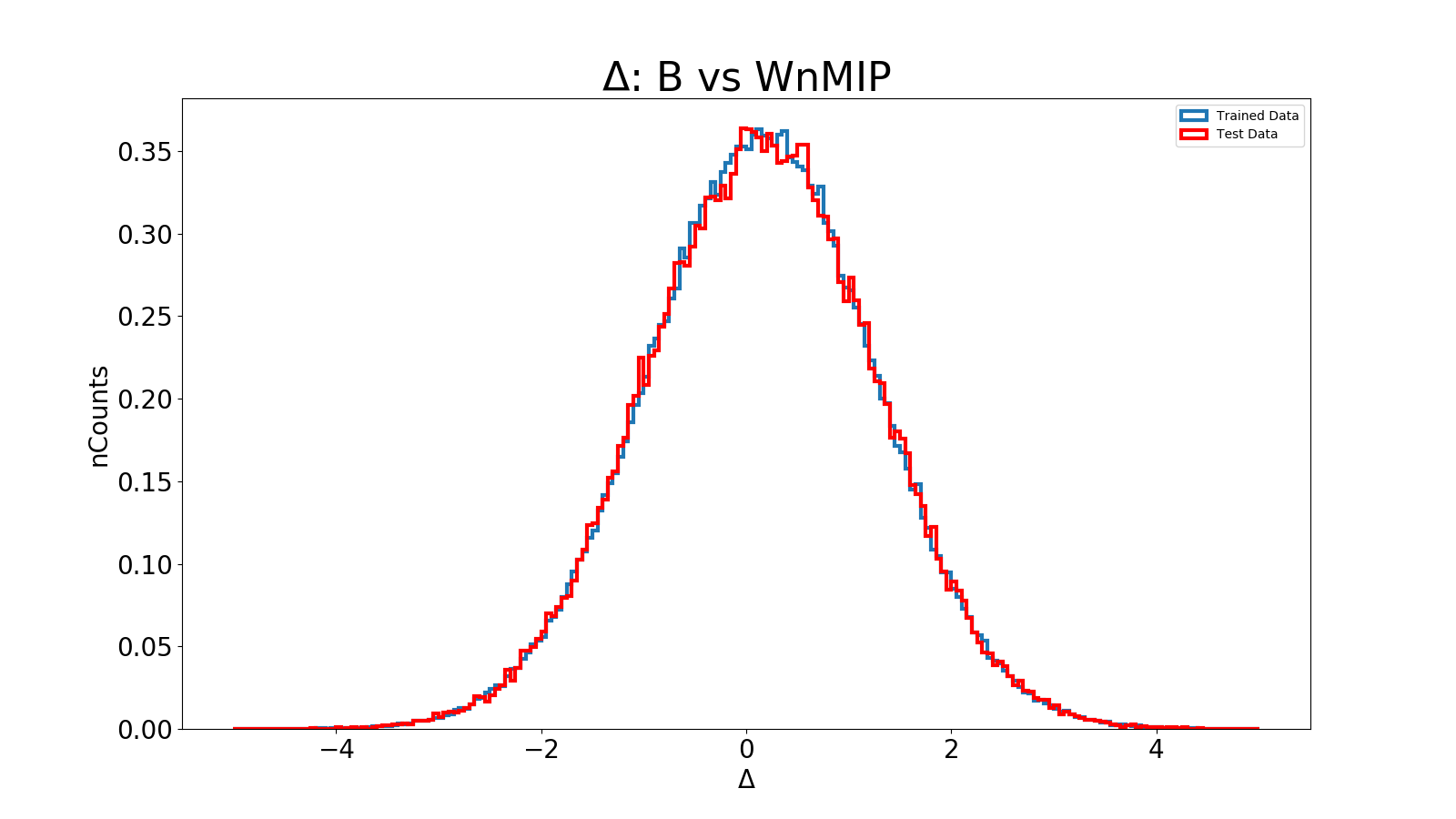EPD Centrality Using UrQMD Simulation Data
Please see Mike Lisa's blog here for details on this analysis.
Ring Weights for UrQMD Au+Au 27 GeV
I used a linear fit function with mean-squared-error to find the best fit. This was done using Keras/TensorFlow in Python with a single neuron. The inputs are the 16 EPD rings, using the sum of all nMIP values in a ring per event. These are fit to the impact parameter, B, which was in the range of 3.0-10.0 fm.
The fit is of the form:

Where the wi are the weights and the ri are the ring nMIP sums. BEPD is the impact parameter found by the weighted sum. Weights are as follows:
Here are some plots of the fits:


Figure 1: Data used to train the fit is on the left, and data used to test is on the right.

Figure 2: This is the raw nMIP sum (no weights; just summed over the entire EPD) vs impact parameter.

Figure 3: This is the difference between B and BEPD. The red curve is for the test data, and the blue curve for trained data.
- skk317's blog
- Login or register to post comments
